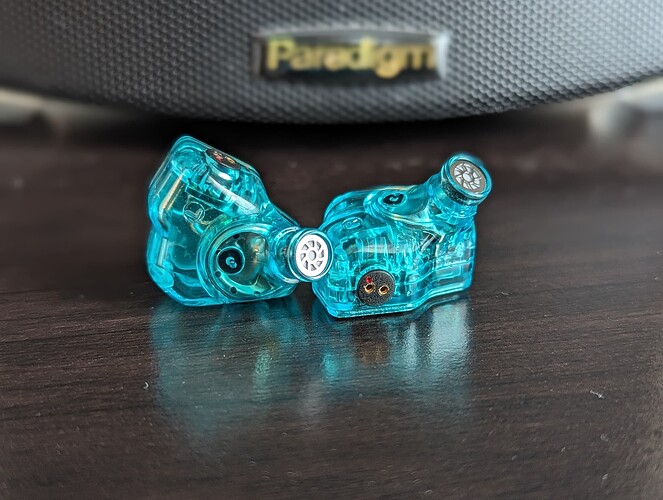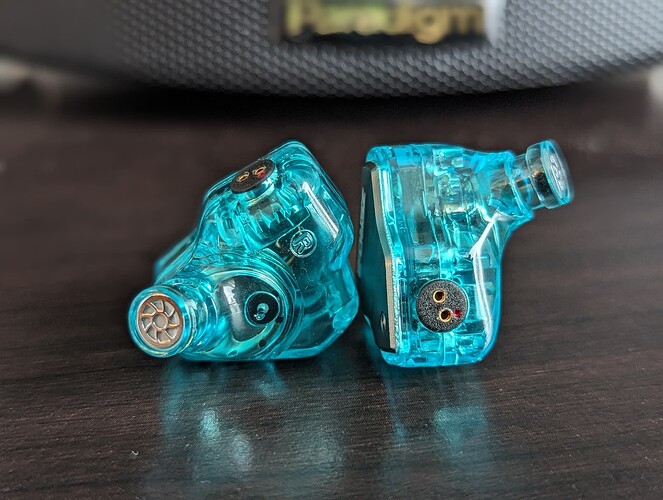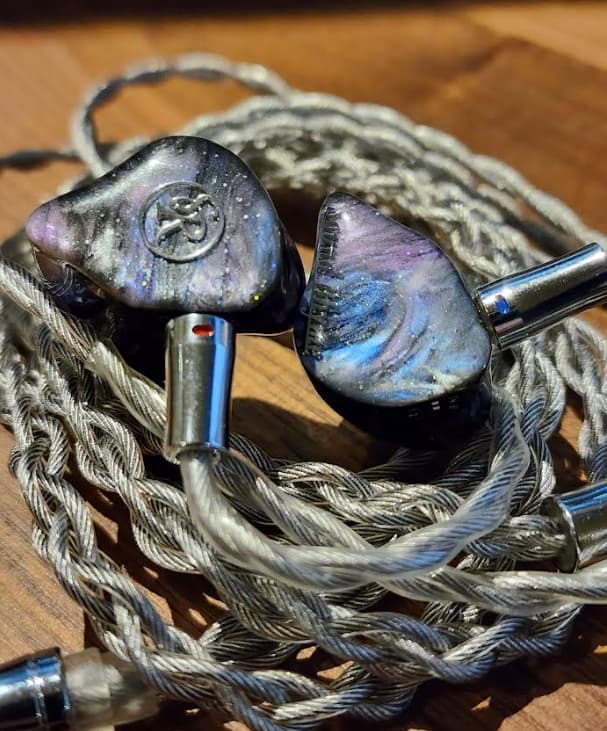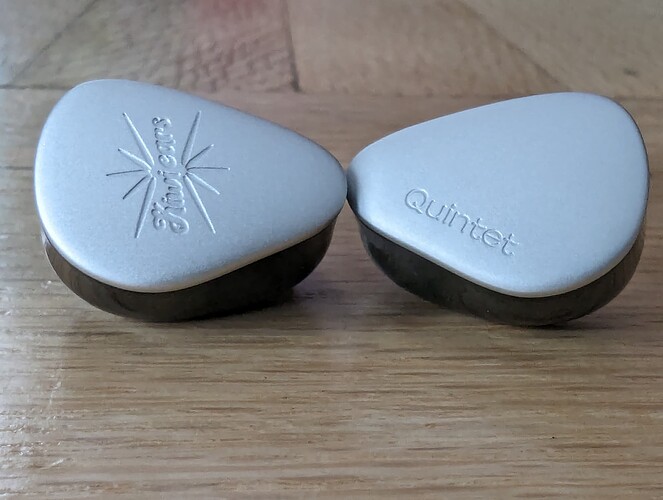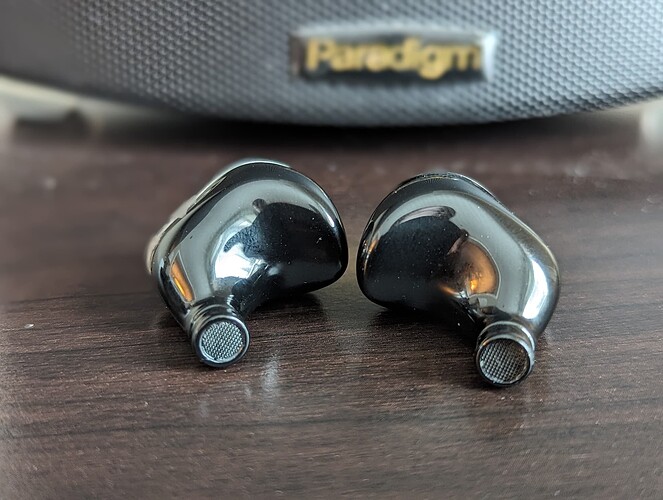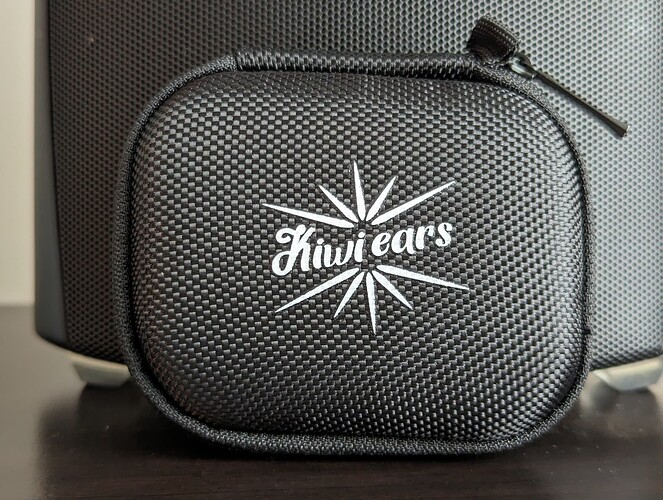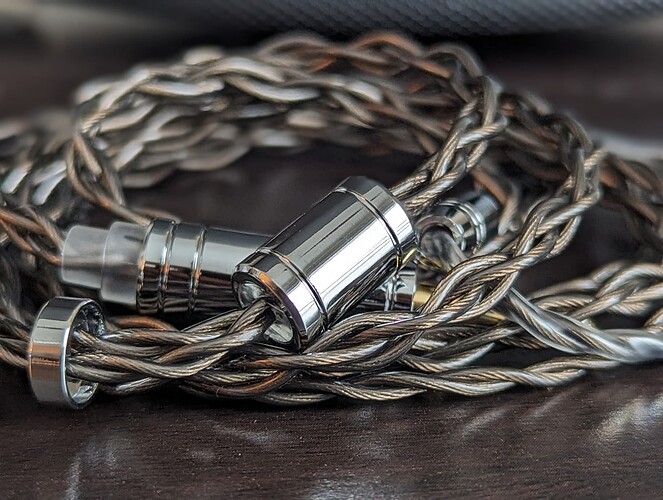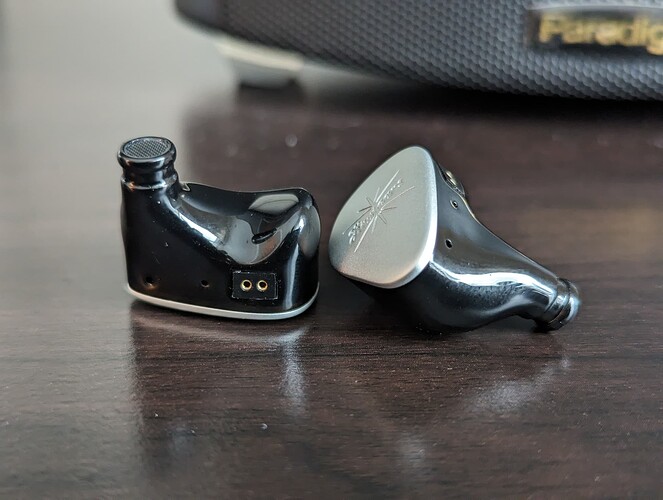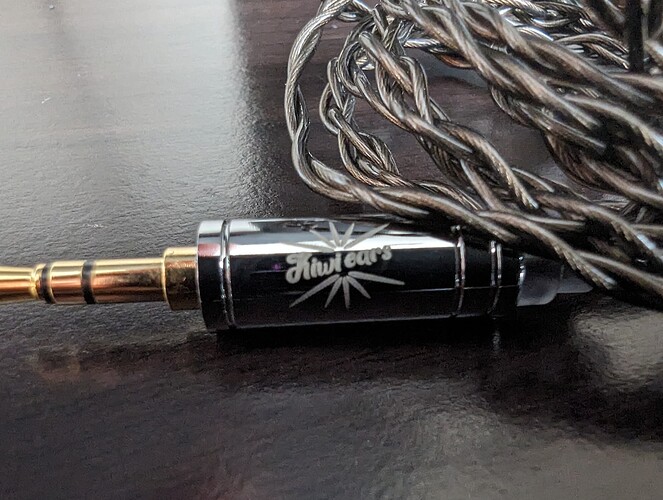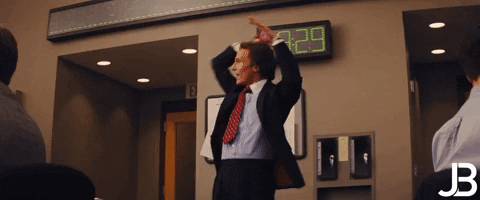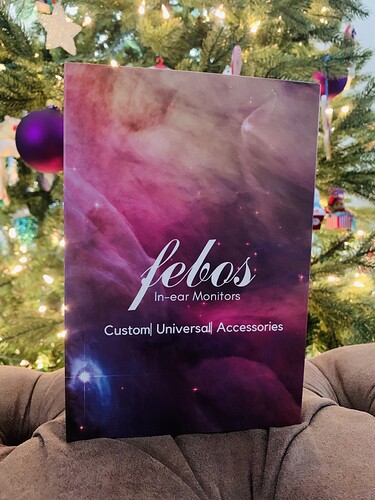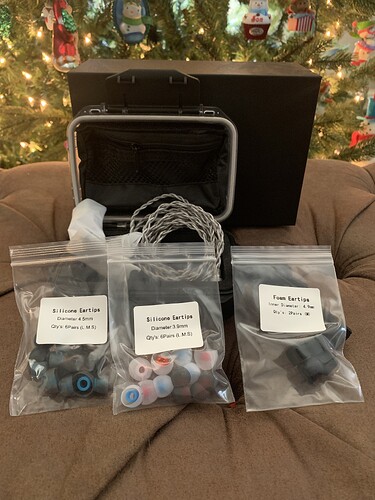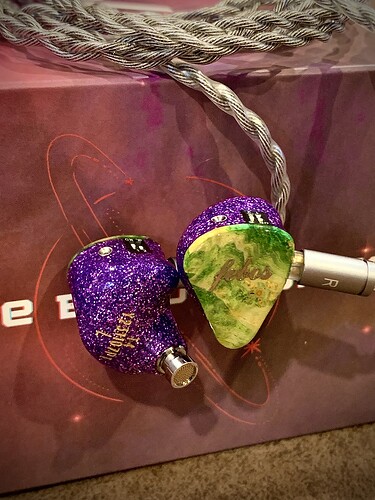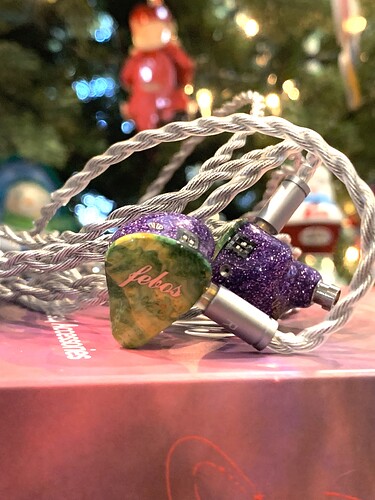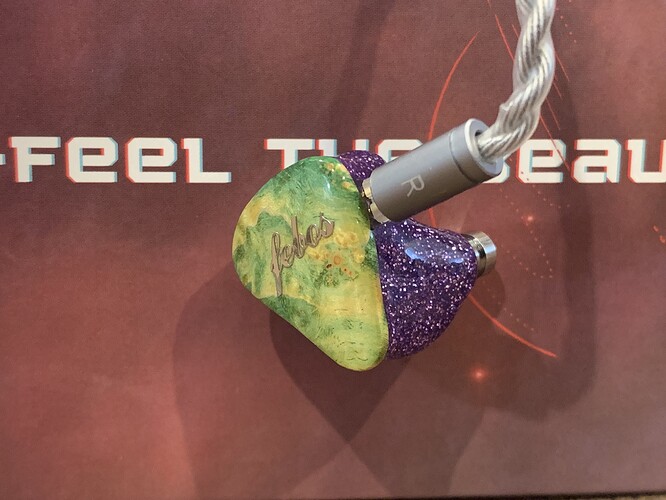Kiwi ears Quintet
The Whole Is Greater Than The Sum Of Many Parts
NOTES:
The Kiwi Ears Quintet isn’t anything if it not ambitious. Retailing for Disclaimer: The Kiwi driver technologies into an overall surprisingly cohesive package of form and function.
The Quintet boasts a driver compliment of five drivers per side. A single dynamic driver, two balanced armatures, one planar and one PZT driver. This is a mouthful for sure and a recipe for disaster unless there is a high level of skill behind the implementation and tuning.
Thankfully Kiwi Ears have pulled it off and the Quintet does not just sound good, it’s sounds very good.
The tuning leans towards more of a balanced-v-shape if that makes sense. Sound is full bodied and articulate yet analytical with good resolution. Fairly easy to drive the Quintet does benefit from better sources and tip rolling is a necessity. I settled on a short stemmed wide bore tip with great synergy. I felt that the Quintet also synergized better with a warmer source as opposed to a more neutral or cold one.
Read on to find out more.
SPECS:
DRIVERS
1 Diamond-Like Carbon (DLC) dynamic driver, 2 balanced armature (BA) drivers, 1 planar magnetic driver, and 1 piezoelectric (PZT) bone conductor
CABLE DETAILS
1.2 Meters, High-quality Oxygen-free Silver-plated Copper Cable
CABLE CONNECTORS
2-pin 0.78mm
CABLE TERMINATION
3.5mm Stereo Cable
BUILD, FIT & QUALITY:
The Kiwi ears Quintet is very well built with an understated design. The 3D printed resin shells are adorned with a metal faceplate with etched branding. The shells are on the larger side but are ergonomically designed so as to fit well. The shells and the faceplates combine to form a smooth and high-quality minimalist look and feel. They did fit well in my ears with little fatigue noted even after a three-hour listening session.
The included accessories are sparse, despite the impressive retail box, but of good quality. There are six pairs of eartips included and a good quality four core SPC cable with a 3.5mm termination.
SOUND:
BASS:
The bass on the Quintet is balanced and goes deep with good speed and detail. Textures come through clearly as heard on “Angel” by Massive attack. Impact and rumble are all present in adequate quantities as dictated by the track. This is not an overblown bass, but one that has ample power, yet is more articulate than most. There is a pleasing thickness and warmth to the low end while still remaining tight and controlled.
There is some warmth from the mid-bass that touches the lower midrange adding a richness to the sound without any veil. Bass quantity I found spot on mostly and I never felt for more. I find the bass of the Kiwi ears Quintet to be quite satisfying and enjoyable to be honest.
MIDRANGE:
The midrange of the Quintet is open with solid detail retrieval and resolution. Technicalities are also where the Quintet shines. The lower midrange has that added warmth and this was heard on “Tenderhearted Lover” by John Stoddart. The richness of his tone coming through with authority.
Upper mids have a touch of added energy and do sound alive without being harsh. “Protection” by Massive Attack had Tracey Thorn’s vocals coming alive yet with great clarity. The only downside is that comparatively the upper midrange can sound a tad thin as compared to the lower midrange. This is not distracting though but can be heard occasionally when critical listening.
On “No Worries” by the Robert Glasper Trio, I was impressed the layering and separation offered by the Quintet as air around each instrument was easily discerned with each being distinct. Listening to “Vanston Place 12am” by Ronny Jordan continued this trend.
Timbre is well done coming through as natural. Dynamics are handled well and transients follow suit with great snap and natural falloff.
Overall, the midrange of the Quintes is win in my books.
TREBLE:
The treble is well extended with ample amounts of sparkle and air. Cymbal brushes and strikes sound great with a natural decay. Detail retrieval is also well done without sounding clinical. Rarely I did hear some sibilance but this was always with tracks known to suffer from that. Such is the trade-off of extended treble response it may seem. Again, this was rare and only in tracks that are known to have this issue.
Treble with all its clarity is still articulate and expressive. Treble sensitive people may take offence but I for one appreciate extended treble and the Kiwi Ears Quintet did not disappoint.
The brushed cymbals on Ronny Jordan’s “Vanston Place 12am” were so smooth and cleanly reproduced it was definitely engaging. Well done.
IMAGING & SOUNDSTAGE:
The Quintet puts out a wide soundstage with lesser degrees of depth and height but still enough to make instrument placement easy. Sound is open never coming across as congested. The Quintet’s layering and separation abilities are really showcased here giving space around each instrument. This was highlighted on “Stimela” by Hugh Masekela, the venue dimensions and instrument placement being precise and the track pulling you in.
VERSUS:
-Hisenior T4-
The T4 is a 4x BA per side iem with no dynamic driver in sight.
Bass power and slam are more prominent with the Quintet, T4 in balanced mode, but comparative with the T4 in “Bass+” mode. The T4 may offer somewhat more detail retrieval in the low end but the organic weight of the bass on the Quintet makes it a serious contender.
In the midrange the T4 takes a decidedly balanced approach while the Quintet offers a more energetic presentation, T4 in balanced mode, while with the T4 in Soundstage+ mode the energy level is comparable. Detail retrieval is where the T4 gets a nod, but just.
Treble is more of the same where the T4 is more balanced with arguably better detail retrieval though air and sparkle are just slightly more prominent on the Quintet which has also better extension.
This is a tough one as the Hisenior T4 is one of my reference sets. If anything, I find the T4 just a bit more engaging in particular for longer listening sessions, but still on more than one occasion found myself pulled into the music whilst listening to the Quintet. It’s a good thing I get to keep both as they are both keepers. The T4 though is better at being what I call a “Reset” iem. Something I like to listen to in between critical listening sessions with others.
CONCLUSION:
Kiwi Ears have done a great job with the Quintet. Pulling all that tech together could not have been easy. The Quintet offers a sophisticated sound in a low-key package which belies everything that is going on in each shell.
No iem, regardless of price, is for everyone. The Quintet has a clean crisp sound that many will like, and some may not. What isn’t up for dispute is how controlled the sound is with good technicalities. The longer I listen to the Kiwi Ears Quintet the more I appreciate what it brings sonically.
It has allowed me more than once to get pulled into the music. This in of itself is praise in my book.
If you are in the market for a well built iem with strong technical performance and a mature sound, the Quintet should be on your shortlist.
The Kiwi Ears Quintet gets a strong recommendation.



